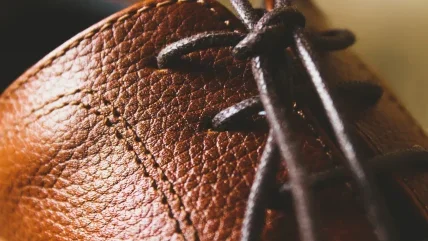
The Indonesian Leather & Footwear expo, organised by Krista Exhibitions, will begin nearly a month earlier than last year – but it can’t arrive soon enough considering the momentum this emerging South East Asian nation is building.
According to recent reports from Insider Inc., Indonesia’s economic growth in the fourth quarter of 2018 exceeded economists’ expectations, despite weaker export growth, as the full-year growth was the fastest in five years. Gross domestic product grew 5.18% year-on-year (compared with the forecasted growth figure of 5.10%) and this follows a 5.17% increase in the third quarter.
This year’s edition of ILF is the 14th international expo, covering leather and footwear machinery, manufacturing technology, and materials and services. Organisers are confident that it will further build on the success of last year’s show and subsequent economic growth. ILF 2019 will once again showcase the latest in quality products on laser machines, and highly competitive technology for leather goods and footwear.
Indonesia’s footwear exports in 2017.
World Footwear
With the Indonesian footwear industry disparately located in Banten, Jawa Barat and Jawa Timur provinces, it is faced with challenges in order to compete but is determined to improve on its current standing as the world’s fourth-largest producer.
The Indonesian Ministry of Industry’s small and medium industries (SMI) for fashion and crafts director, E Ratna Utarianingrum, said that it is aiming to enter the big three, which are “supported by government interventions and ease of doing business”. It is also supported by several governmental initiatives, and despite less impressive export results for 2018, the sector set records in 2017 by reaching $4.8 billion. Imports also rose considerably during that time, but remain a small percentage compared with exports. The Ministry of Industry continues to support leather. In a written statement late last year, the director general of SMI at the Ministry of Industry, Gita Wibawaningsih, said, “Indonesia has great potential to develop the leather, footwear and leather goods industry. Currently, Indonesia is in the sixth position in the world as an exporter of leather products, footwear and leather goods.” The ministry is also pushing ahead with its programme to improve levels of human resources in the industrial sector and revitalise the Tanggulangin SMI centre in Sidoarjo, East Java, to further stimulate the growth of the leather industry, footwear and leather goods.
Cautious optimism
With more investment fuelling ambition and attention, Indonesia is motivated to show that its ability to compete internationally is a long-term strategy. However, as we found out at last year’s show, some are skeptical regarding the nation’s ability to overcome various short-term hurdles.
Arifin Kustiawan, vice-secretary general of the Indonesian Tanners Association, said that the past few years have provided some hindrances for the progress of Indonesian leather. Like other markets, it has been adversely affected by stumbling hide prices, and the ongoing shift to synthetics and mixed materials, especially in footwear.
But hides are starting to slowly recover, if the talk at the recent Tanning Tech and Lineapelle in Milan is any guide – and generally it is. With this trend, hopefully production will reverse its downward path and the quality of imported cow hides from South America, Australia and India will become more consistent, boosting the confidence of buyers of finished products from Indonesia, even though the overall reputation for Indonesian leather is high.






